Shrine of St Edward the Confessor, Westminster Abbey
PILGRIMAGE UK: HOLY PLACES

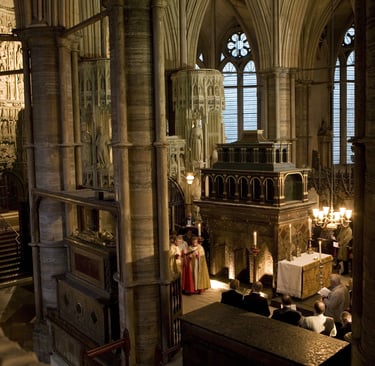
The Chapel of St Edward at Westminster Cathedral is a sanctuary that draws the pilgrim into a profound encounter with the mystery of faith, where history, art, and liturgy converge in a space that is as contemplative as it is inspiring. Hidden within the sweeping grandeur of Westminster Cathedral, this chapel, dedicated to St Edward, stands as a testament to a heritage that reaches back to an age of devout kingship and pious wonder. In its quiet reverence and thoughtfully composed beauty, the chapel invites the heart and mind to reflect upon the omnipresence of God—a presence that is not confined to ornate cathedrals alone but which infuses every shadow and echo of time.
Upon entering the chapel, one is immediately struck by the gentle interplay of light and stone. The space is carefully arranged: soft natural light pours through carefully placed windows, illuminating the intricately carved altar and delicate statues that adorn the walls. The stone, cool and enduring, seems to whisper tales of generations who have knelt in prayer and sought solace within these hallowed confines. It is here, in a setting that exudes both humility and grandeur, that the memory of St Edward is called forth—not merely as a historical figure, but as a living reminder of a faith that has been tested and refined over time. The very fabric of the chapel speaks to a conviction held by many theologians: that God’s grace is not confined to the solemn spaces of modern worship but is woven into the tapestry of history and human endeavour.
St Edward, whose life and piety have long been admired in the annals of sacred history, serves as an enduring exemplar of heartfelt devotion in this sacred space. His memory, echoed through the dedication of the chapel, calls to mind the medieval tradition of seeking God’s favour through acts of penance and genuine contrition. Yet, it is not solely his past that we celebrate; it is the way in which his legacy continues to inspire the worship and ministry of Westminster Cathedral today. The chapel, with its quiet dignity and reflective atmosphere, is a place where visitors are encouraged to contemplate the nature of true sanctity—a sanctity born of inner transformation and an unwavering commitment to the truth revealed in Christ.
In this contemplative environment, the interplay between liturgy and art functions as a mirror reflecting the deeper wounds and beauties of the human soul. Every element—from the delicate brushstrokes of the stained glass to the carefully chiseled lines of the altar—serves a purpose beyond mere aesthetics. They are ensigns of a truth that theologians have long sought to articulate: that God is present in all places, in every moment, and even in the silence between prayers. As Karl Rahner once remarked, “Everywhere is the altar, yes, heaven is everywhere.” In the Chapel of St Edward, one can feel the truth of that assertion in every quiet corner, every ray of light that illuminates dust motes suspended in the air, reminding us that the grace of God permeates every space.
The ancient stones of the chapel also carry with them the weight of centuries of prayer, struggle, and hope. They have witnessed the fervour of countless pilgrims, the soft murmur of liturgical song, and the passionate outpouring of hearts in worship. Here, one senses that the chapel is not merely a relic of the past but a living presence—a place that continues to nurture the spiritual life of those who enter its doors. The whispers of bygone eras meld with the prayers of the present, forming a timeless dialogue that bridges generations. It is easy to feel that one is part of something far greater than oneself—a continuum of faith that binds the human spirit to the eternal mystery of divine love.
This sense of continuity is further enriched by the chapel’s subtle reminder that God’s presence is not limited to the visible forms of the sacred but extends ubiquitously into all of creation. As Johann Adam Möhler, an influential theologian of the Church, once observed, the sacred is not confined by walls or roofs; rather, it is a dynamic reality that fills every space where the heart is tuned to listen. In the Chapel of St Edward, this idea is palpably present; the careful balance of shadow and light, the echoing silence of the vaulted ceilings, all work together to create a space in which the believer can experience God in the immediacy of the moment. Such an encounter is not abstract or remote—it is deeply personal and discernible, a call to recognise that the divine is ever-present, even in the quiet places of a bustling world.
The ministry undertaken within Westminster Cathedral, and by extension in the Chapel of St Edward, is informed by a tradition that values both intellectual rigour and heartfelt devotion. St Edward’s memory is honoured not through ostentation but through a lived expression of faith, one that resonates with the pastoral care and gentle guidance that has come to define the cathedral’s outreach. Here, the faithful find a space to question, to pray, and to renew their commitment to a life of Christian discipleship. The chapel’s serene ambience fosters a sense of interior renewal—a reminder that every individual is invited to engage deeply with the mystery of grace, to seek truth with both the mind and the heart.
It is in these quiet moments of reflection and prayer that one is drawn to the words of Dietrich Bonhoeffer, who once wrote, “Action without reflection is empty. Reflection without action is paralysing.” In the contemplative silence of the chapel, the faithful are invited to bridge the gap between reflection and action—to recognise that the grace received within these walls should inspire deeds of mercy and kindness in the outside world. The chapel becomes a launchpad not only for personal spiritual renewal but also for a renewed commitment to living out the Gospel in every facet of one’s life, echoing the ministry of St Edward and the broader tradition of the Church.
Furthermore, the Chapel of St Edward stands as a reminder of the transformative power of beauty when it is coupled with truth. Its artistic features, modest and gracefully executed, do not merely serve as decoration; they are integral to the worship experience. Each carved detail, each flicker of colour from the stained glass, invites the observer to encounter the mystery of God’s revelation. The visual language of the chapel speaks to a long tradition in which the senses are drawn into a dialogue with the spiritual realm. This sensuous dialogue, reminiscent of the teachings of Hans Urs von Balthasar, underlines the understanding that beauty can be a conduit for divine encounter. The chapel, therefore, is not only a place of intellectual homage or historical recollection—it is a living, breathing space where beauty, truth, and love coalesce.
In the end, the Chapel of St Edward within Westminster Cathedral offers more than a physical space for worship—it provides a profound invitation to journey inward, to contemplate the marvels of faith, and to rekindle an awareness of God’s omnipresence. It is a place where the call to pilgrimage is met not with the fanfare of dramatic ceremony, but with the quiet assurance of a gentle spirit that tells us, “You are not alone.” The legacy of St Edward, intertwined with the ongoing ministry of the cathedral, reminds us that the journey to God is both collective and deeply personal. Each visitor, in taking a moment to pause within this sacred space, becomes part of an eternal conversation—a dialogue that transcends time and speaks to the heart of what it means to live a life filled with grace and purpose.
In this sacred retreat, nestled amidst the grandeur of Westminster Cathedral, one discovers that God’s presence is not confined to a particular ritual or building. It is experienced in the soft murmur of prayer, the delicate interplay of light and shadow, and the resilient echo of centuries of devotion. The Chapel of St Edward thus stands as a luminous beacon—a reminder that in every space, every moment, despite the fleeting nature of human existence, there lies an invitation to encounter the eternal.
As the pilgrim departs from this hallowed space, the spirit is uplifted by the quiet certainty that the grace experienced here will continue to guide and sustain long after the doors have closed. It is a grace that calls forth active love and compassionate service, urging each soul to be a living witness to the truth that God’s presence extends into every corner of our lives. In reflecting upon the chapel’s enduring beauty and significance, one is left with the comforting knowledge that the pilgrimage of faith is not defined by the grandeur of the setting but by the depth of one’s encounter with the unfailing love of God.
Encountering Eternal Grace: A Reflection on the Chapel of St Edward, Westminster Cathedral
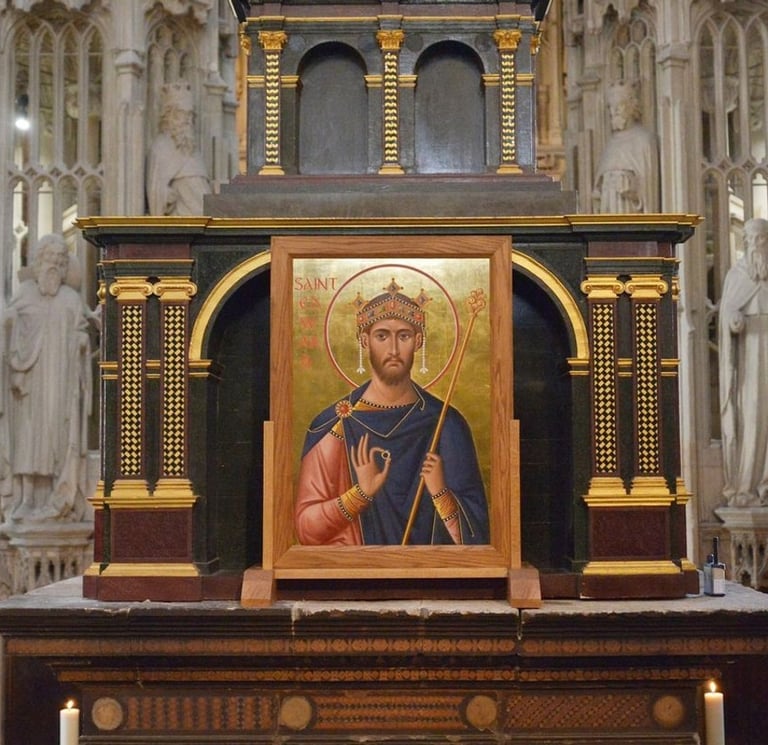

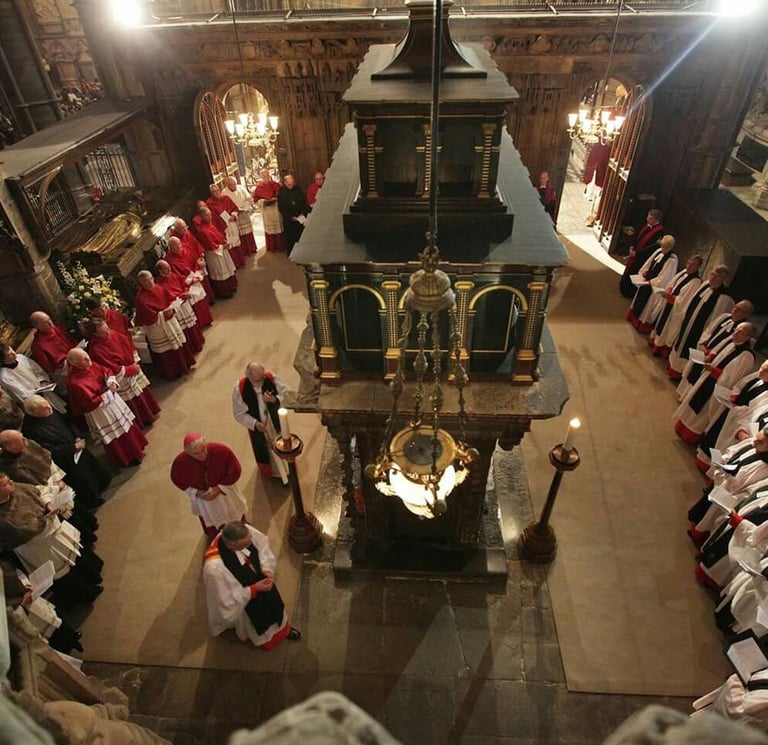

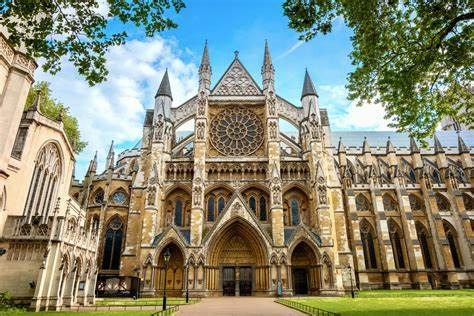

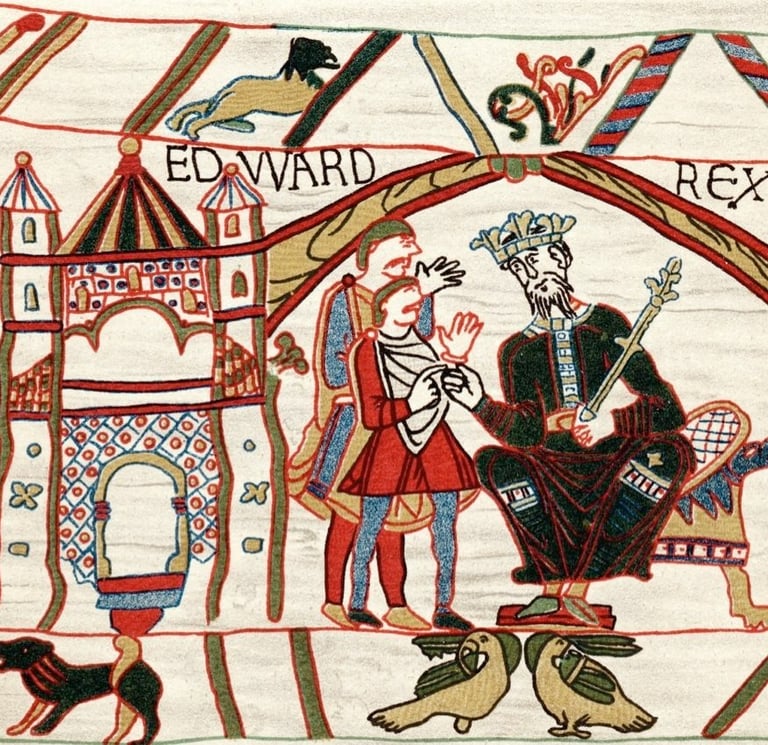

Ancient Apostolic Catholic Church
Embracing faith, inclusion, and compassionate service together.
ST THOMAS AQUINAS SEMINARY
© 2025. All rights reserved
QUICK LINKS
